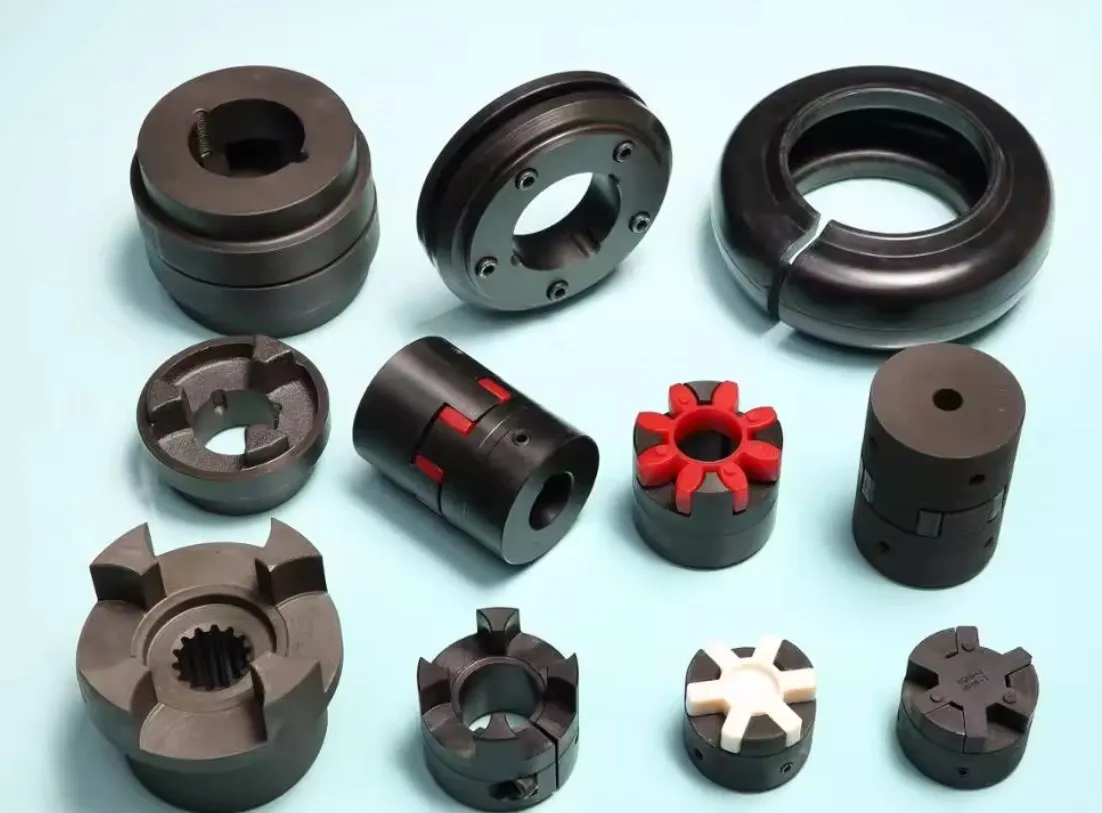Elastic Coupling for Desalination Plants
Introduction to Elastic Couplings
Elastic couplings are critical components in the operation of desalination plants. They provide the necessary flexibility and resilience to handle the dynamic forces involved in desalination processes.
Advantages of Elastic Couplings in Desalination Plants
Elastic couplings offer numerous benefits, including vibration damping, misalignment accommodation, and wear resistance, making them indispensable in desalination plant applications.
Types of Elastic Couplings
There are several types of elastic couplings, each designed to meet specific operational needs. Common types include jaw couplings, tire couplings, and sleeve couplings.
Jaw Couplings
Jaw couplings consist of two hubs and a flexible element, often referred to as an elastomer. They are known for their simplicity and effectiveness in accommodating misalignment.
Tire Couplings
Tire couplings feature a rubber element shaped like a tire, providing excellent shock absorption and torsional flexibility. They are ideal for applications with high shock loads.
Sleeve Couplings
Sleeve couplings use a flexible sleeve to connect two shafts, offering moderate flexibility and ease of maintenance. They are commonly used in moderate-speed applications.
High Elastic Rubber Coupling
High elastic rubber couplings are designed to offer superior flexibility and vibration damping. They are particularly suitable for high-torque applications.

Superior Vibration Damping
The high elastic rubber material effectively dampens vibrations, reducing wear and tear on connected machinery.
Enhanced Torque Transmission
These couplings are engineered to handle high torque levels, making them ideal for heavy-duty operations.
Misalignment Accommodation
High elastic rubber couplings can accommodate angular, axial, and radial misalignments, ensuring seamless operation.
Durability
The robust construction of high elastic rubber couplings ensures a long service life, even in demanding environments.
Maintenance-Free
The design of these couplings minimizes the need for regular maintenance, saving time and resources.
What are flexible couplings used for?
Flexible couplings have a wide range of applications across various industries.

Power Transmission
Flexible couplings are used to transmit power between shafts while absorbing misalignment and reducing wear.
Shock Absorption
They effectively absorb shocks and vibrations, protecting connected equipment from damage.
Compensating for Misalignment
These couplings can compensate for angular, parallel, and axial misalignments between connected shafts.
Reducing Noise
Flexible couplings help in reducing operational noise, contributing to a quieter working environment.
Enhancing Machine Performance
By maintaining alignment and absorbing shocks, flexible couplings enhance the overall performance and reliability of machinery.
What are the three types of coupling?
Couplings can be broadly categorized into three types: rigid, flexible, and fluid couplings.
Rigid Couplings
Rigid couplings are used when precise shaft alignment is required. They provide a solid connection with no flexibility.
Flexible Couplings
Flexible couplings accommodate misalignment and absorb shocks, making them suitable for a variety of applications.
Fluid Couplings
Fluid couplings transmit torque through a hydraulic medium, offering smooth operation and protection against shock loads.
Choosing or Customizing the Right Elastic Coupling
When selecting or customizing an elastic coupling, several parameters and conditions must be considered:

Torque Requirements
Determine the torque requirements of your application to ensure the coupling can handle the load without failure.
Misalignment Tolerance
Assess the degree of misalignment that the coupling needs to accommodate, including angular, radial, and axial misalignments.
Operating Environment
Consider the operating environment, including temperature, humidity, and exposure to chemicals, which can affect the coupling’s performance.
Speed of Operation
Evaluate the operational speed to ensure the coupling can handle the rotational velocity without compromising performance.
Maintenance Needs
Choose a coupling that aligns with your maintenance capabilities and schedules, minimizing downtime and costs.
HZPT: Your Trusted Partner for High-Precision Couplings
HZPT, established in 2006, is a leading manufacturer specializing in the research, development, and production of high-precision couplings, ball screw support units, motor brackets, and motion modules. Our coupling product line includes couplings for servo motors, stepper motors, micro motors, and encoders.
Our Advantages
We offer several advantages that set us apart from the competition:
Advanced Technology
Our state-of-the-art technology ensures that our couplings meet the highest standards of precision and reliability.
In-House R&D Center
Our dedicated research and development center allows us to innovate and continuously improve our products to meet evolving market demands.
In-House Manufacturing and Testing
We maintain complete control over our manufacturing and testing processes, ensuring consistent quality and performance.
ISO 9001:2015 Certification
Our commitment to quality is demonstrated by our ISO 9001:2015 certification, ensuring our products meet international standards.
Global Recognition
Our products are widely recognized and used by top-tier clients in Japan, the USA, Germany, Israel, Malaysia, Singapore, and Taiwan, among others.
With 169+ product lines, our high-precision couplings are widely applied in electronics, solar, photovoltaic industries, machine tools, packaging, molds, medical equipment, printing, and various automation machinery. We invite you to partner with us and experience our commitment to excellence in every product we offer.